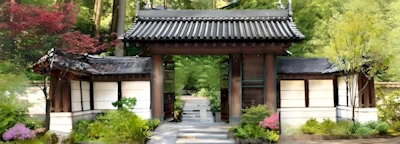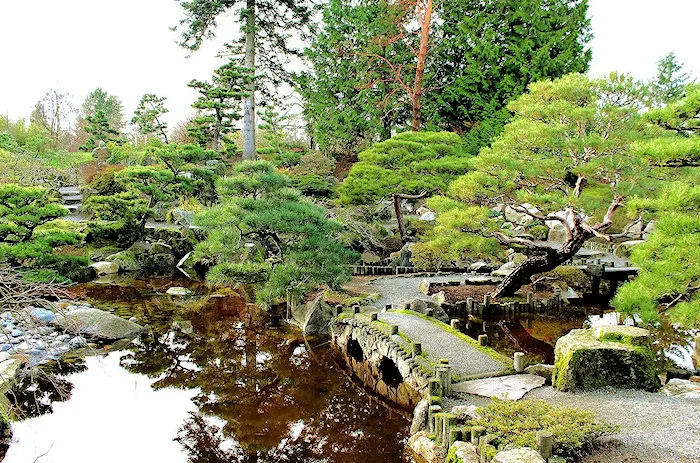Seike Japanese Garden - Highline SeaTac Botanical Garden
Event Location
SeaTac, WA 98168
Opened in June 2006, the Seike Japanese Garden is another one of the Highline SeaTac Botanical Garden’s great treasures. It is located down the hill just past the Daylily and Iris beds.
This beautiful garden was previously located at the former site of the Des Moines Way Nursery in the city of SeaTac. In danger of being sold due the expansion of SeaTac Airport, the garden was saved by four different governments and the Highline Botanical Garden Foundation. The project to save the garden is believed to be the largest relocation of a Japanese Garden ever attempted in the United States. Here is the Garden’s inspiring story:
Shinichi Seike immigrated to the United States from Ehime, a southern Japanese island, in 1919 and ran an import/export business in Seattle. In 1929 he purchased 13 acres near Des Moines Memorial Drive and moved into a farmhouse with his wife Kameno, daughter Ruth, and sons Ben, Toll, and Hal.
Along with more than 100,000 other Japanese-Americans, the family was interned during World War II.
Eventually all three sons served in the military, and middle son Toll was killed in action during WWII in France while serving with the distinguished 442nd Regimental Combat Team, the most-decorated military unit in U.S. History.
Many Highline area Japanese American families lost their property during the internment. Ironically the Seikes were fortunate in that a German-American family had managed their property during their absence. Upon their return, Shinichi Seike started a nursery in 1947. In 1953, the nursery store was opened after sons Hal and Ben earned Horticulture degrees from Washington State University.
In 1961 the family began construction of a Japanese Garden as a memorial to their son and brother, Toll, and to capitalize on their proximity to the 1962 Seattle World’s Fair. The Seikes hired Shintaro Okada, a garden designer from Hiroshima, to assist with planning and construction. Mr. Okada arrived in December 1960, and construction started in January 1961.
Construction was complete by June 1961, and a gala opening was held on June 25th to promote the garden. A twenty-five cent admission fee was collected to benefit Children’s Hospital, and anyone wearing a kimono was admitted free. Garden club tours were available by appointment, and the Garden was opened to the public several times a year until about 1973. Due to increasing theft and vandalism, the Garden was closed for about 10 years, then reopened in 1983. The Garden remained a Highline “best-kept secret” for nearly two additional decades.
A classic pond-and-mountain style garden, the original project was built at a cost of around $75,000. The mountain required 350 tons of stone and 100 yards of topsoil to create. The 1500-square-foot pond, supplied by an artesian well located on the property, took 12 hours to fill. Many of the plants were from Shinichi Seike’s personal collection, including a gnarled laceleaf Japanese maple now more than 100 years old. Red and Black pines installed as saplings are now magnificent hand-pruned specimens. Many of the trees and shrubs used to screen the garden had since grown beyond transplantable size.
The $350,000 relocation effort lead by the City of SeaTac and City Manager Craig Ward focused on recreating the stonework, pond, and built elements such as the bridges and lanterns, saving only the most significant plants. The ultimate goal remained a faithful recreation of designer Shintaro Okada’s intent, and the preservation of a significant local horticultural, cultural, and historical amenity.
A copy of the DVD which tells the story of the Seike Japanese Garden Is available through the King County Library System (DVD-2008, DVD 712.509797).
Contact
Phone: (206) 391-4003Location Website
Click to Visit
(For Event Information See Event Website Page)
Authentic Japanese Gardens (United States)
Best Japanese Gardens
Japanese Rock 'Zen' Gardens (United States)
Best Japanese Rock 'Zen' Gardens
Japanese Teahouses (United States)
Best Japanese Teahouses
Japanese Museum Art
Japanese Museums Map of Japanese Museums

















